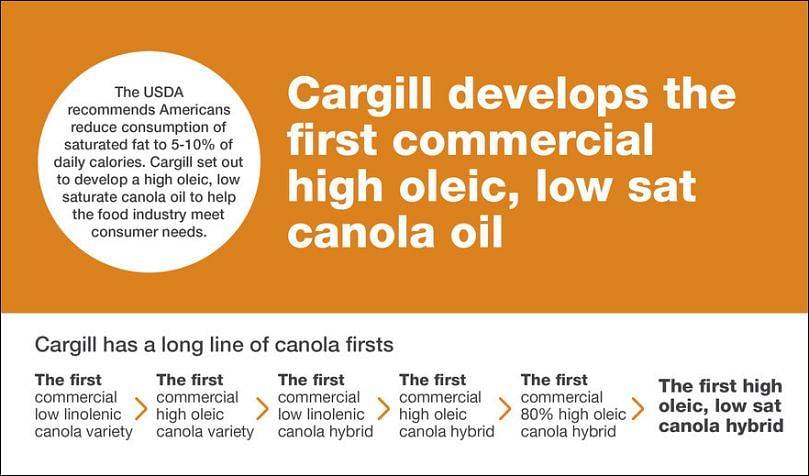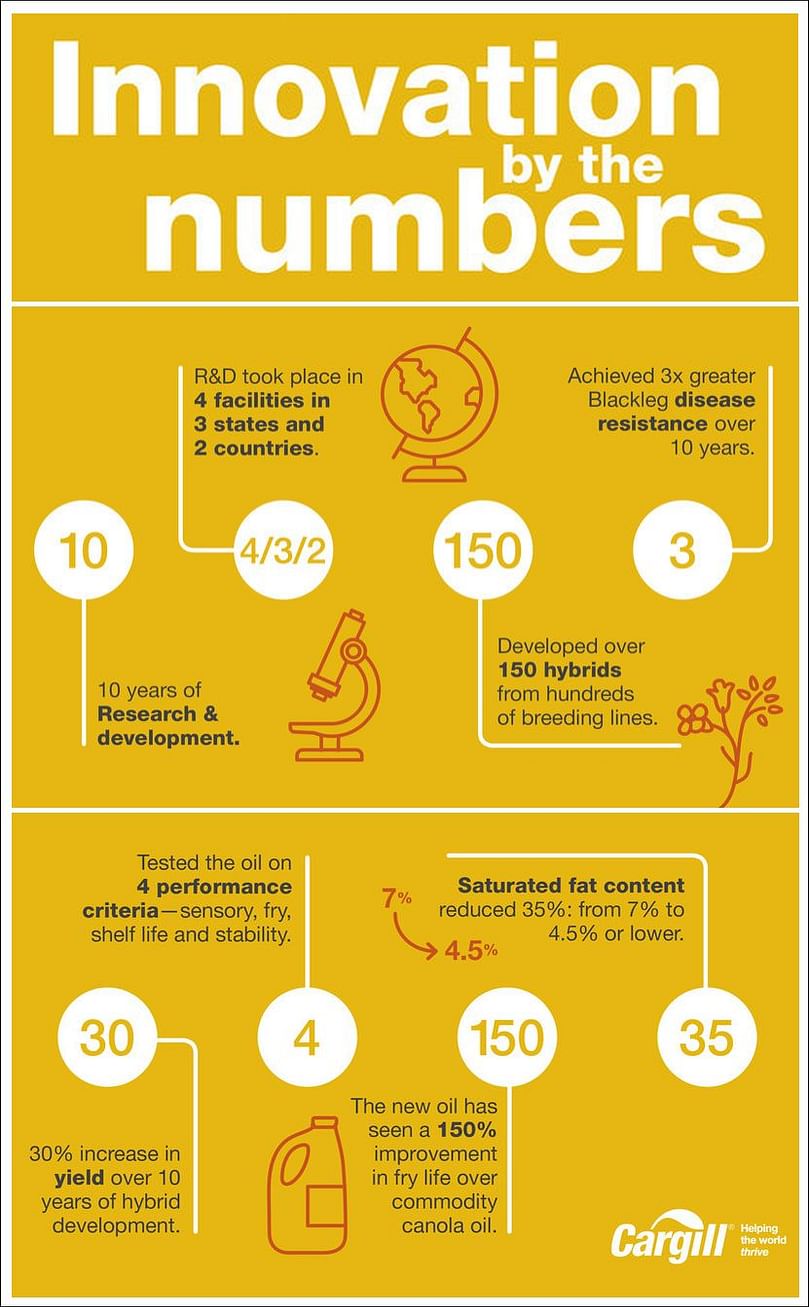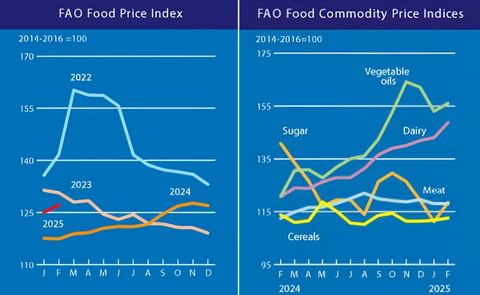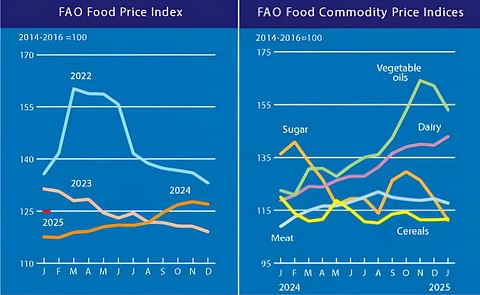The new high-oleic oil has been extensively tested - including for french fries of course. Lorin Debonte, Director of R&D, Specialties at Cargill (left) can be seen here testing french fries prepared in the new oil.
Cargill introduces a New High Oleic Canola Oil with 35% Lower Saturated Fat for Foodservice

Cargill has introduced the lowest saturated fat, high oleic canola oil available to commercial food customers worldwide.
The oil is made from a canola hybrid that contains 4.5 percent or less saturated fat while maintaining high fry and shelf life performance, freshness and taste.
It reduces saturated fat content 35 percent from previous canola oil generations.
“Cargill is committed to innovation with a purpose—with a focus on responsibly nourishing the world.”First deliveries of the oil will reach customers in early 2018.
“This new low sat, high oleic canola oil is no exception.”
“We dedicated 10 years to finding a canola hybrid that could improve the nutrition profile of our oil.”
“At the same time, the canola was bred to meet customer demands—providing high yield and disease resistance for growers and taste, shelf life and fry life qualities for our food manufacturers and restaurant customers.”
It arrives at an ideal time for customers and consumers alike, as the USDA and Health and Human Services 2015-2020 Dietary Guidelines encourage Americans to limit saturated fat intake to 10 percent of their daily calories.
Kristen Dammann, registered dietitian in Cargill scientific and regulatory affairs:
“Healthy diets balance the types of fats we consume, with guidelines suggesting we reduce both trans fats and saturated fats.”Willie Loh, Cargill market development:
“Those can then be replaced with healthier options, like unsaturated fats, which have been shown to decrease bad cholesterol and reduce the risk of cardiovascular disease.”
“Oil is a basic cooking staple, used in everything from crackers, croutons and fried foods to dairy creamers and spreads.”Cargill’s high oleic, low saturated canola oil joins other oils and shortenings offered commercially under the Clear Valley® brand. North American growers can select the premium canola bred for this oil under the Victory® brand.
“Our new canola oil simply gives consumers a healthier option for many of their favorite foods.”

A canola field.
“I see growing the new Victory canola as a sustainable asset on our farm. It’s an opportunity to contribute to a healthier oil—healthy options are the future.”The canola hybrid was developed through traditional breeding methods, with a focus on club root and black leg disease resistance, as well as strong yield performance. Growers can add herbicide tolerance as an optional genetic modification, depending on their markets and preference.
“And this new variety of canola is good. It’s producing strong plants with solid yields.”

Cargill has established a long history of gathering market insights to deliver first-to-market specialty canola oils that meet the food industry’s nutritional and performance needs
Prior to the high oleic, low saturated canola oil, Cargill introduced the world’s first low linolenic canola oil in 1992, the first high oleic canola oil in 1993 and the first commercial 80 percent high oleic canola oil in 2011.
Like to receive news like this by email? Join and Subscribe!
NEW! Join Our BlueSky Channel for regular updates!
Highlighted Company
Sponsored Content
Sponsored Content
Sponsored Content
Sponsored Content
Sponsored Content












